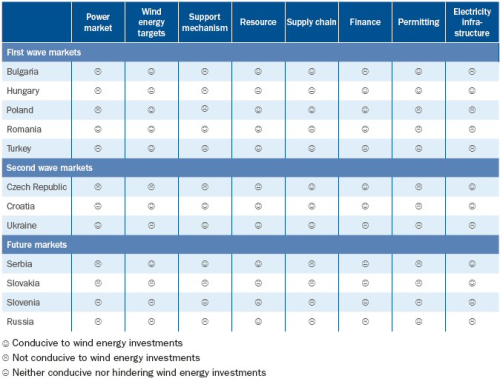
The EWEA report, Eastern Winds – Emerging European Wind Power Markets, analyses the emerging wind power markets in Central and Eastern European countries, plus Turkey, Ukraine and Russia.
“Wind energy in Central and Eastern Europe, including Turkey, will substantially reduce the fossil fuel dependency of the power sectors,” said Christian Kjaer, Chief Executive Officer at EWEA.
“But some countries – such as the Czech Republic, Hungary and Bulgaria – are without stable renewable energy legislation, and investors and banks will withdraw unless governments put in place long-term renewable energy policies.”
12 newer EU Member States in Central and Eastern Europe plan to increase wind power capacity from the 6.4 GW installed at end of 2012 to 16 GW by 2020. This is equivalent to the electricity supply of 9 million households .
Turkey wants to increase wind power capacity from its current 2.3 GW to 20 GW by 2023.
Poland and Romania almost doubled their annual installed wind power capacity in 2012. At the end of 2012, Poland had 2.5 GW, Romania 1.9 GW, and Bulgaria 0.7 GW of wind power capacity installed.


